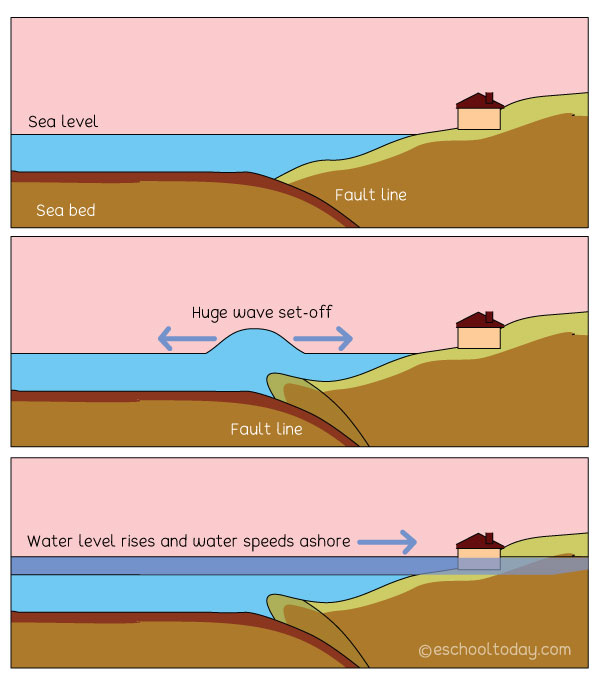- Earthquakes
What is a Tsunami?
It is simply a series of massive ocean waves triggered by an earthquake that has occurred in the sea (or ocean). The displaced water then runs ashore and into the land. A tsunami happens when the plates underneath the Earth’s surface move (focus) so that one slips under another.
Tsunamis may also be caused by underwater landslides or volcanic eruptions.

The water level can rise as high as 100ft, even though it can look like only a foot or two from above. The water moves at incredible speed (500 miles per hour) towards land, with phenomenal destructive power. The speed of the water picks up as it travels.
Tidal waves differ from tsunamis. Tidal waves are usually in a circular motion. Tsunamis are a lot different. The water moves with a flat surface and has a lot of speed and power.
Researchers believe that most tsunamis (80%) happen within the Pacific Ocean’s “Ring of Fire”, a geologically active area where tectonic shifts make volcanoes and earthquakes common.
During a tsunami, your best bet for safety is to move to higher ground.
